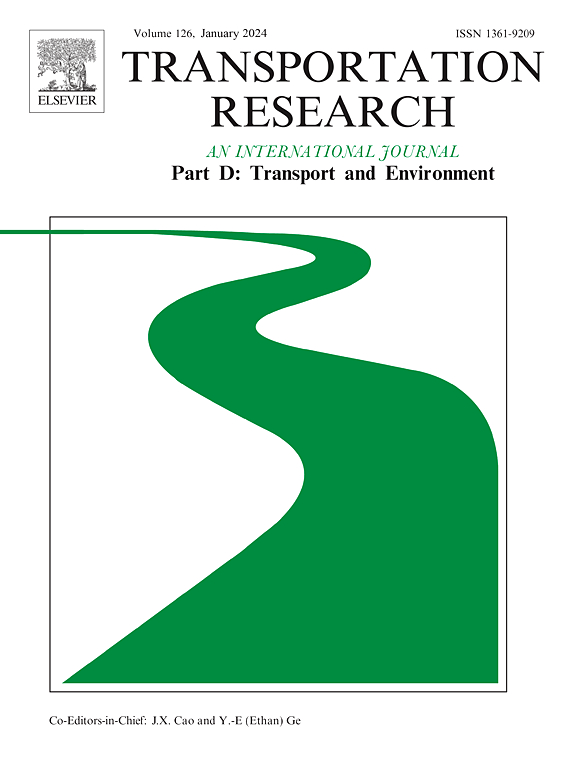不同的斜坡适合不同的人:不同的社会人口群体的步行能力-步行关联的变化
IF 7.7
1区 工程技术
Q1 ENVIRONMENTAL STUDIES
Transportation Research Part D-transport and Environment
Pub Date : 2025-07-30
DOI:10.1016/j.trd.2025.104914
引用次数: 0
摘要
过去的研究表明,对于边缘群体来说,步行能力可能是一个较弱的步行行为预测指标。虽然一些研究讨论了这种差异的潜在原因,但很少有研究对其进行实证检验。我使用2017年全国家庭旅行调查(n = 148,480)来解决这一差距,并提出以下问题:(1)不同社会人口群体之间的步行能力和步行之间的关联是否不同?(2)如果是,可能的解释是什么?使用具有相互作用项的逻辑回归模型,我评估了客观步行指数(暴露)和功利步行(结果)之间的关联如何因种族/民族和收入而变化,然后研究了这些差异如何被财务约束和环境障碍所缓和。结果显示:(1)黑人、西班牙裔和低收入人群的步行能力和步行之间的关联较弱;(2)种族(基础设施/安全差异)和收入(低车辆通道)对这些结果的潜在解释存在差异。这些发现强调了在社会人口背景下促进步行的差异化策略的重要性。本文章由计算机程序翻译,如有差异,请以英文原文为准。
Different slopes for different folks: Variations in walkability-walking associations across sociodemographic groups
Past research suggests that walkability may be a weaker predictor of walking behavior for marginalized groups. While some studies have discussed potential reasons for this difference, few have tested them empirically. I address this gap using the 2017 National Household Travel Survey (n = 148,480), asking: (1) Do associations between walkability and walking differ across sociodemographic groups? (2) If so, what are the potential explanations? Using logistic regression models with interaction terms, I assess how associations between an objective walkability index (exposure) and utilitarian walking (outcome) vary by race/ethnicity and income, then examine how these differences are moderated by financial constraints and environmental barriers. The results show (1) weaker associations between walkability and walking for Black, Hispanic, and lower-income individuals and (2) differences in potential explanations for these results by race (infrastructure/safety disparities) vs. income (low vehicle access). These findings highlight the importance of differentiated strategies to promote walking across sociodemographic contexts.
求助全文
通过发布文献求助,成功后即可免费获取论文全文。
去求助
来源期刊
CiteScore
14.40
自引率
9.20%
发文量
314
审稿时长
39 days
期刊介绍:
Transportation Research Part D: Transport and Environment focuses on original research exploring the environmental impacts of transportation, policy responses to these impacts, and their implications for transportation system design, planning, and management. The journal comprehensively covers the interaction between transportation and the environment, ranging from local effects on specific geographical areas to global implications such as natural resource depletion and atmospheric pollution.
We welcome research papers across all transportation modes, including maritime, air, and land transportation, assessing their environmental impacts broadly. Papers addressing both mobile aspects and transportation infrastructure are considered. The journal prioritizes empirical findings and policy responses of regulatory, planning, technical, or fiscal nature. Articles are policy-driven, accessible, and applicable to readers from diverse disciplines, emphasizing relevance and practicality. We encourage interdisciplinary submissions and welcome contributions from economically developing and advanced countries alike, reflecting our international orientation.

 求助内容:
求助内容: 应助结果提醒方式:
应助结果提醒方式:


